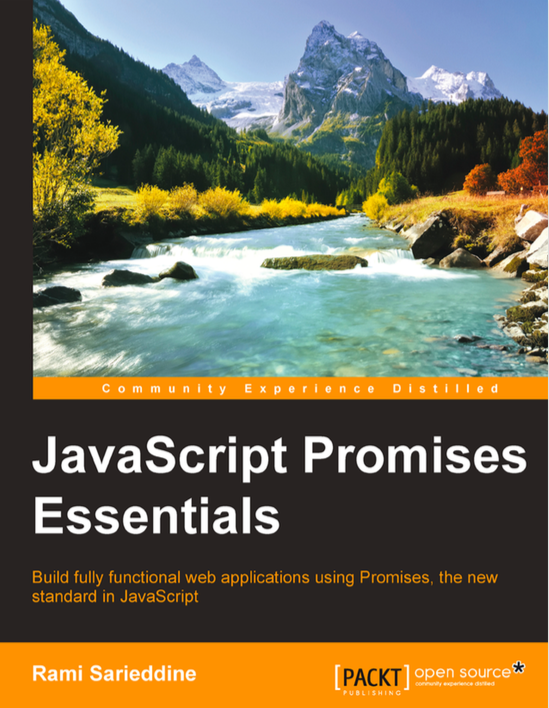JavaScript Promises Essentials


JavaScript is asynchronous by definition which is what makes many server-side developers struggle initially. Many even try to avoid asynchronism as much as they can rather than to embrace it. Others end up in a callback mess. That’s where promises come into play!
The following code is a typical piece of JavaScript code. Some async function is invoked, passing the implementation of a function callback as a hook point for processing the data once it is retrieved.
// call getData which asynchronously loads the data from somewhere
getData(function(result){
// do something meaningful with result
});While this example looks nice and simple, it can quickly grow into a complete mess. Assume for instance you have to fetch some data from different backend APIs for then processing them. You could write the code like this:
getPeople(function(peopleResult){
getAddresses(function(addressResult){
// use peopleResult and addressResult for further elaboration
});
});The issues with this code:
addressesdoesn’t depend onpeoplein our example: still, they’re retrieved in sequence rather than in parallel.- the nesting looks messy and is hard to read.
Promises can help here.
A promise represents the eventual result of an asynchronous operation. Promises/A+ specification (https://promisesaplus.com/)
For instance take jQuery’s Promise API also known as Deferred. The code shown before could be rewritten as:
var people = getPeople();
var addresses = getAddresses();
$.when(people, addresses).done(function(peopleResult, addressesResult){
// elaborate the data
});It allows to nicely flatten the otherwise nested structure of calls. Besides synchronizing different async calls, the capability of chaining is another extremely powerful concept, allowing to convert this..
$("#testInpt").click(function () {
firstCallBack(function (param) {
getValues(param, function (result) {
alert(result);
});
});
});into this…
$("#testInpt").clickPromise() // promise-returning function
.then(firstCallBack)
.then(getValues)
.then(alert);Note how the result of one call is passed as argument to the next one.
The book
PacktPub just released JavaScript Promises Essentials where Rami Sarieddine takes a deeper look at the Promise API by addressing and using promises as defined in the specification of Promise/A+.
From the book:
If we list the properties that make promises easier to work with, they will be as follows:
- It is easier to read as with the usage of cleaner method signatures
- It allows us to attach more than one callback to a single promise
- It allows for values and errors to be passed along and bubble up to the caller function
- It allows for chaining of promises
The book covers quite everything a developer needs for adding Promises to his toolbox. Here’s an excerpt of the table of contents, just to give you an idea.
- JavaScript Promises - Why Should I Care?
- The Promise API and Its Compatibility
- Chaining of Promises
- Error Handling
- Promises in WinJS
- Putting It All Together - Promises in Action
After introducing the general concept of a Promise and compatibility issues, it starts to treat the nitty gritty of Promises, showcasing concepts like chaining and exception handling. It also takes a look at how they are realized in WinJS, the Microsoft’s JavaScript library for developing Windows 8 Metro applications.
My favorite part: when the author puts all of the concepts together at the end of the book and builds a Promise library from scratch. This really gives you the opportunity to look inside, to experience the design issues and inner workings.
Conclusion
Promises should definitely be part of every developer’s toolkit. If you feel you didn’t yet grasp them, go and do some reading or even better, some walk through tutorials.
The book definitely covers everything you need to know, not by explaining a specific Promise library but rather by giving you the general understanding of how a Promise is intended to work. From there it’ll be quite easy to understand the various implementations in jQuery.Deferred, RSVP.js, Q.js or how they’re all being called.
(Btw, once you get how promises work, you can take a look at ES6 generators ;) )